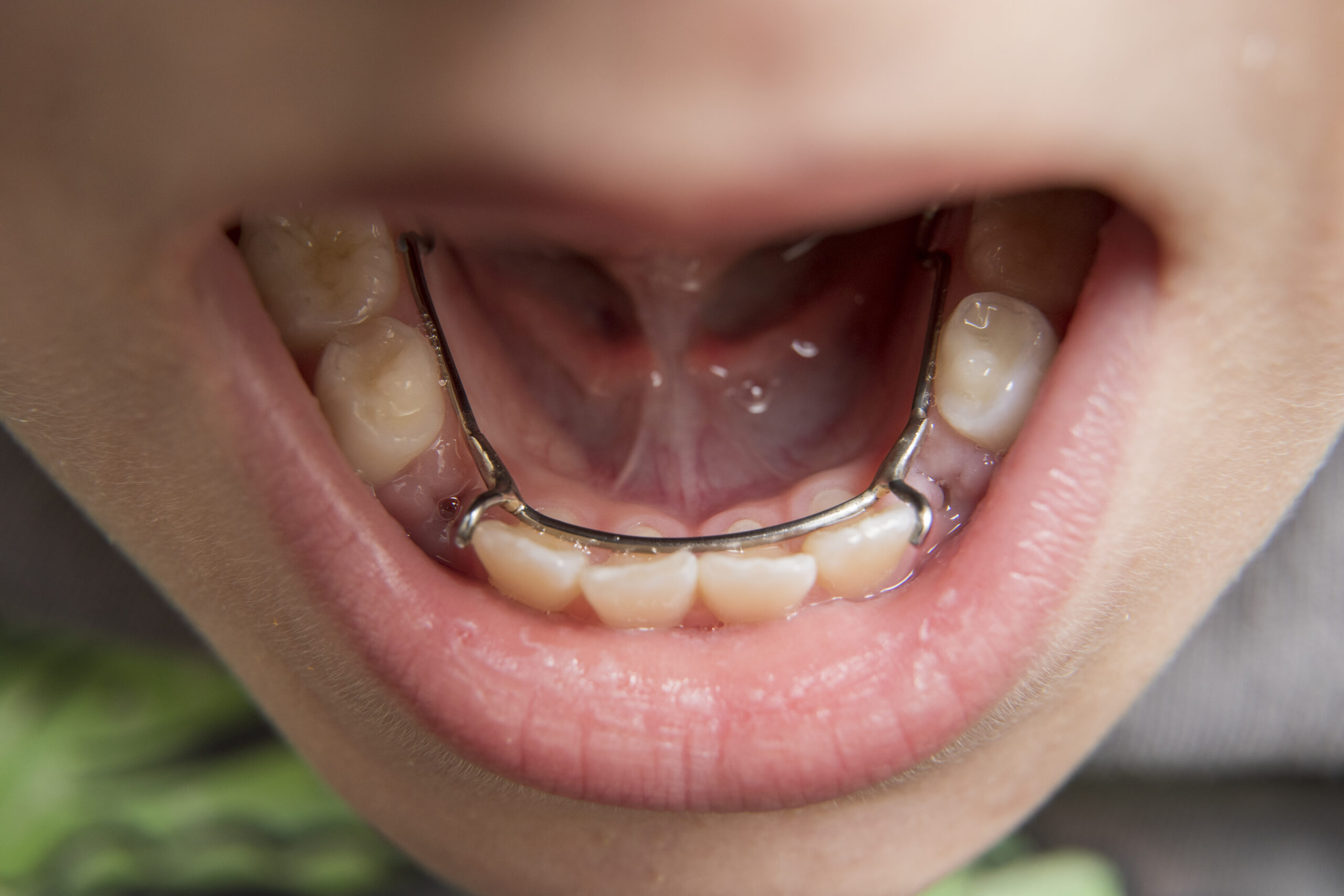Addressing Poor Outcomes with Removable Orthodontic Appliances
Case Study
Mario Catalano, DDS, MAGD
February 24, 2021
Reading time: 5 minutes

Background
Treatment with clear, removable orthodontic appliances is an option that is becoming accepted in mainstream dentistry. This treatment is popular with patients from both an appearance and convenience standpoint. However, it is not without risks as illustrated by the following case.
Case Discussion
Dr. M was a residency-trained general dentist who had been in solo practice for about two years. One of the services she offered to her patients was orthodontic treatment using clear, removable appliances (trays).
The patient was a 57-year-old female who came to Dr. M wishing to have four lower anterior teeth (23, 24, 25, and 26) straightened. She also wanted the dentist to replace tooth 19, which was missing, with an implant. Dr. M determined that the patient was a suitable candidate, so she suggested using removable orthodontic appliances. The patient was delighted with this prospect and readily agreed.
Dr. M took a set of full mouth X-rays on the patient. After completing the necessary paperwork, the patient’s records were sent to the aligner company for analysis and recommendations. The aligner company opined that the patient was an appropriate candidate for its product and indicated that the straightening of the anterior teeth should be easy to accomplish. The company also suggested to close the space between teeth 18 and 20, thereby eliminating the necessity for an implant for tooth 19. The patient accepted this proposal and treatment was commenced.
After treatment with tray number 3 was completed, Dr. M noticed that the tooth 19 space was not closing (because the trays had not been properly constructed), and she reordered the remaining trays. Once the replacement trays were received, treatment continued as planned for the remainder of the first year. At that time, Dr. M noticed significant mobility in all six teeth being treated. After being advised of this development, the patient became concerned and sought a second opinion from an orthodontist.
The orthodontist concluded that he could not improve the situation much. He placed fixed bands on teeth 22, 23, 24, 25, 26, and 27 and referred the patient to an oral and maxillofacial surgeon (OMS) for evaluation of teeth 18 and 20. The OMS concluded that teeth 18 and 20 were not salvageable and recommended their removal and replacement with bone grafts and implants. This procedure was performed, and a fixed bridge was then placed from teeth 18 to 20. Ultimately, teeth 22, 23, 24, 25, 26, and 27 were restored with a bonded splint, with a guarded long-term prognosis.
The patient brought a dental malpractice lawsuit against Dr. M, alleging lack of adequate informed consent, a poorly designed treatment plan, and failure to perform the alignment therapy correctly, resulting in the loss of two teeth and the potential loss of an additional four. At the doctor’s request, the case was settled in the midrange, with defense costs in the low range.
Risk Management Considerations
Theodore Passineau, JD, HRM, RPLU, CPHRM, FASHRM
All dentists understand the inherent risk present when an attempt is made to move or realign permanent teeth, but this risk is not commonly appreciated by the general public. That is where the concept of informed consent comes into play: educating the patient regarding the indications, contraindications, expected benefits, and recognized risks of proposed dental treatment.
Unfortunately, some dentists view informed consent as a necessary step that is done just to prevent litigation. When treatment is elective and not time-sensitive (as in this case), thorough patient education by means of a face-to-face conversation — and memorialized by a signed consent form — should occur.
When this process does occur, not only is it clear that the patient has understood and accepted the risks associated with the procedure, but also patient compliance with the treatment plan tends to improve (including alerting the dentist to any unexpected developments). Additionally, the patient’s expectations of both the treatment process and the final results tend to be more realistic. This informed consent conversation also tends to enhance the overall doctor-patient relationship, which is a key factor in avoiding dental malpractice litigation. However, if Dr. M did, in fact, practice below the standard of care, a thorough informed consent process would not have protected her from liability; patients are never expected to consent to negligent care.
Additionally, whenever the dentist expands his or her scope of practice (generally or in a particular case), it is essential that he or she possess the necessary knowledge and skill to practice within the standard of care immediately upon commencing the new therapy. Dentists are most vulnerable to a failed case early in the “learning curve” (such as when first learning to place dental implants).
Further, in this case, it was unclear whether the dentist failed to monitor the patient’s dentition at appropriate intervals during the treatment process or that she simply did not recognize the negative direction her treatment was taking. However, it is clear that earlier intervention would have been beneficial.
It is also unlikely that the manufacturer of the orthodontic appliances could face any potential liability in this kind of case. Under a legal principle known as the Learned Intermediary Doctrine, when a “learned intermediary” (in this case, the doctor) chooses to use a particular technique or product, he or she becomes solely responsible for the results of that decision. Unless a defect was in the product that the doctor did not and could not have reasonably been aware of, the manufacturer is largely insulated from liability. However, if the manufacturer had sold the product directly to the patient (as recently seen advertised), the Learned Intermediary Doctrine would not apply and the manufacturer would face liability. In this case, although the manufacturer advised Dr. M that the patient’s condition could be corrected via its appliances, this advice was given to the doctor, not to the patient.
Conclusion
Dentistry is constantly evolving with new techniques, products, and materials making their way into daily practice. Although it is incumbent on dentists to keep abreast of new developments, it is also necessary to have a thorough understanding of these new products and techniques before incorporating them into daily practice.
Note that this case presentation includes circumstances from several different closed cases, in order to demonstrate certain legal and risk management principles, and that identifying facts and personal characteristics were modified to protect identities. The content within is not the original work of MedPro Group but has been published with consent of the author. Nothing contained in this article should be construed as legal, medical, or dental advice. Because the facts applicable to your situation may vary, or the laws applicable in your jurisdiction may differ, please contact your personal or business attorney or other professional advisors if you have any questions related to your legal or medical obligations or rights, state or federal laws, contract interpretation, or other legal questions.
Additional Risk Tips content

Canceled Joint Replacement Results from Dentist’s Lack of Awareness
Learn how a dentist’s lack of awareness of new protocols can lead to major inconveniences for a patient.

Difficult Patient Sues Dentist After Improper Dismissal and Jousting
This article explores a scenario where a dentist faces a malpractice claim and board complaint after improperly dismissing a difficult patient. Learn the essential steps for proper patient dismissal to protect your practice and license.

Audio Records Reveal Flaws in Dentist’s Informed Consent Process
Dentists should be cautious recording patient visits. Learn how a dentist’s audio records became evidence against them in a malpractice case.
This document does not constitute legal or medical advice and should not be construed as rules or establishing a standard of care. Because the facts applicable to your situation may vary, or the laws applicable in your jurisdiction may differ, please contact your attorney or other professional advisors if you have any questions related to your legal or medical obligations or rights, state or federal laws, contract interpretation, or other legal questions.
MedPro Group is the marketing name used to refer to the insurance operations of The Medical Protective Company, Princeton Insurance Company, PLICO, Inc. and MedPro RRG Risk Retention Group. All insurance products are underwritten and administered by these and other Berkshire Hathaway affiliates, including National Fire & Marine Insurance Company. Product availability is based upon business and/or regulatory approval and/or may differ among companies.
© MedPro Group Inc. All rights reserved.